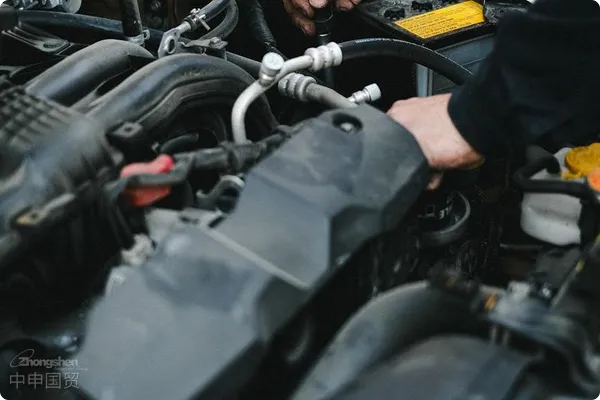- Shanghai Zhongshen International Trade Co., Ltd. - Two decades of trade agency expertise.
- Service Hotline: 139 1787 2118

globalAutomotive partsPractice and Innovation in International Trade Agency Services
Author:Seniorforeign tradeService Expert (20 Years of Industry Experience)
Improve the classified management of manufacturing enterprises
Against the backdrop of deep integration and accelerated technological iteration in the global automotive industry, international trade in automotive parts has exhibited new characteristics such as regionalized supply chains, stringent compliance requirements, and customized services. Based on 20 years of cross-border trade agency experience, this article systematically analyzes the key processes, risk prevention, and innovative service models in automotive parts exports, providing strategic-level solutions for industry participants.
Contents
ToggleI. Evolution of the Global Automotive Parts Trade Landscape
1.Please translate the following Chinese into English: Market Size and Growth Drivers
- The global automotive aftermarket size exceeded $430 billion in 2023,New energyAuto parts annual growth rate reaches 18% (LMC Automotive data)
- The demand for imported maintenance parts in emerging markets such as Southeast Asia, the Middle East, and Latin America has surged, with China, Germany, and Mexico firmly maintaining their positions as the top three exporting countries.
2.Trends in Supply Chain Restructuring
- The USMCA in North America and the EU's CBAM carbon tariffs are driving the restructuring of regional supply chains.
- Tesla's Gigacasting Technology Gives Rise to New Form of Monolithic Component Exports
- Vietnam and Thailand are taking over the transfer of secondary suppliers for Japanese automakers, forming cross-border distribution hubs.
II. Analysis of Core Pain Points in Automotive Parts Export
1.Anti - dumping and Counter - vailing Duties (AD/CVD)
- The EU REACH Regulation has upgraded the control limit for polycyclic aromatic hydrocarbons (PAHs) in rubber seals to 0.1 ppm.
- The U.S. DOT certification has added cybersecurity testing requirements for ADAS system-related components.
2.Logistics adaptability challenges
- The transportation of precision sensors must comply with the IEC 60721-3-5 Class 3 vibration standard.
- Battery - type AccessoriesMaritime TransportationMust obtain IMDG CODE UN38.3 certification.
3.High-risk areas for intellectual property disputes
- Patent Infringement Claims Arising from Reverse Engineering of OEM Drawings (North American Customs Seizure Cases Increased by 37% Year-on-Year in 2023)
- Determination of Compliance Boundaries for Trademark Parallel Imports in African and Middle Eastern Markets
III. The Value Creation Model of Professional Agency Services
1.End-to-end risk control system
- Establish a dynamic compliance database: Covering product access standards and HS code updates for 63 countries.
- Triple Tariff Optimization Mechanism:
?? Rules of Origin Application (RCEP Regional Value Content Calculation)
?? U.S. Section 321 De Minimis Duty-Free Declaration
?? EU Deferred VAT (VAT Deferment) fund occupation reduced by 70%
2.Intelligent Supply Chain Solutions
- VMI (Vendor Managed Inventory) system interfaces with the OEM's JIT delivery requirements.
- Blockchain Traceability Platform Application: Full Lifecycle Tracking from Casting Mold Number to Terminal Installation
3.Technical Compliance Value-added Services
- EU Type Approval pre-assessment service reduces certification cycle by 45 days.
- North American Aftermarket AMS (Aftermarket Supplier) Qualification Agency Services
IV. Practical Case: Breaking Through in the Export of New Energy Vehicle Components
Project Background
A Chinese manufacturer of lithium battery cooling systems is expanding into the German market and encounters the following challenges:
- The IEC 62660-2 cycle test failed to meet the standard.
- EU carbon footprint accounting document missing
- The local distribution channels are monopolized by Bosch/Continental.
Urgent application for a CPSC Childrens Product Certificate (CPC) issued by a third - party laboratory
- Technical Breakthrough: Introducing TüV Rheinland Laboratory for Pulse Current Simulation Testing Optimization
- Green Customs Clearance: Establish an EPD (Environmental Product Declaration) file to comply with the requirements of the German Supply Chain Act.
- Channel Innovation: Accessing the European 4S Store System through Stellantis Group OES Certification
Achievements: Achieved a breakthrough in annual export volume from $0 to $28 million within 12 months.
5. Digital Transformation Empowers Supply Chain Innovation
1.AI application scenarios
- Machine learning predicts high-risk product categories in US ITC 337 investigations
- NLP technology enables real-time semantic parsing of technical regulations across EU member states.
2.Digital Twin Warehouse
- 3D shelf modeling improves the storage efficiency of special accessories (such as air suspensions) by 40%.
- The RFID+GIS system enables 48-hour rapid distribution in the Middle East bonded warehouse.
VI. Industry Forecast and Response Strategies for the Next Three Years
1.Three major disruptive variables.
- The EU Battery Passport will be mandatory from 2026.
- Mexico's Nearshoring Manufacturing Gives Rise to New U.S.-Canada-Mexico Triangular Trade Corridor
- Customs Classification Disputes Arising from 3D Printed Accessories (Commodity Tariff Code vs. Design Data)
2.Enterprise Capability Building Matrix
- Establish a dual-system certification for QMS + TPRM (Third-Party Risk Management).
- Develop a cross-border compliance team well-versed in AEO certification standards.
- Gain a voice in setting standards for emerging fields such as Layout R153 (Autonomous Driving System).
Conclusion
The international trade of automotive parts is undergoing a strategic transformation from cost orientation to value creation. Professional agency service providers must take technical compliance as the cornerstone and data intelligence as the engine to build an ecosystem-based service system covering "certification-logistics-finance-delivery," helping Chinese manufacturing secure a dominant position in the global automotive industry chain's value restructuring.
(The data in this article is as of Q2 2023. Please indicate the source when reposting.)
Related Recommendations
? 2025. All Rights Reserved. Shanghai ICP No. 2023007705-2  PSB Record: Shanghai No.31011502009912
PSB Record: Shanghai No.31011502009912









